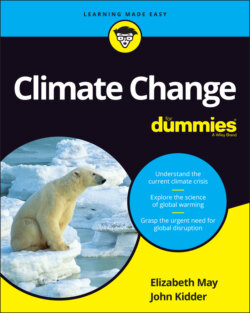Читать книгу Climate Change For Dummies - Elizabeth May - Страница 84
Examining the Different Types of Fossil Fuels
ОглавлениеCoal, oil, and natural gas are all fossil fuels, but they’re not all the same. They differ in how they’re used, how much they’re used, the GHGs that they release when they’re burned, and even where they come from.
When land plants, such as trees, decomposed hundreds of millions of years ago, they pressed together into a solid form known as coal. Plants and animals in the oceans decomposed in a similar way — sinking to the bottom of the ocean, getting buried under sediments, forming peat, and eventually being compressed into fossil fuels such as oil.
Each type of fossil fuel has a different amount of carbon in it, so it puts a different amount of carbon dioxide into the air when it’s burned. Coal releases the most carbon dioxide when burned, natural gas the least. In the following sections, we take a closer look at the different types of fossil fuels, starting with the largest contributor, coal, and working our way down to natural gas.
As the costs of renewables continues to drop rapidly, it turns out that, rather than having enormous costs, the transition away from fossil fuels will generate net economic benefits of trillions of dollars. And rather than running out of fossil fuels, most of what’s left will no longer be profitable and will be left in the ground. The IEA has made it clear that to hold to safe levels of warming, most of the known reserves of fossil fuels have to be left the ground. Chapter 18 deals with this astonishingly quick disruption of the world’s energy supplies.
